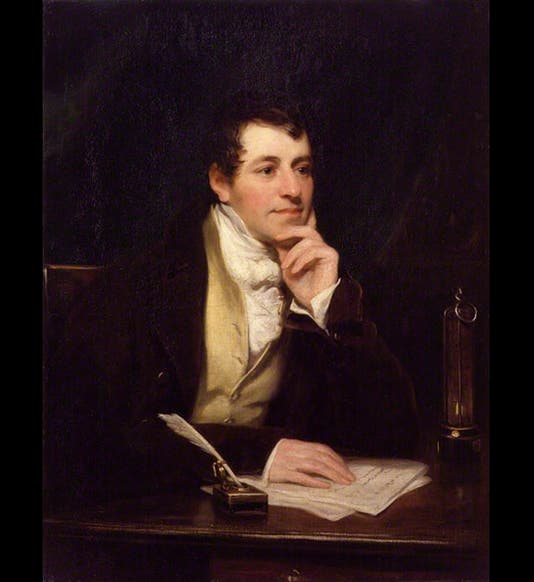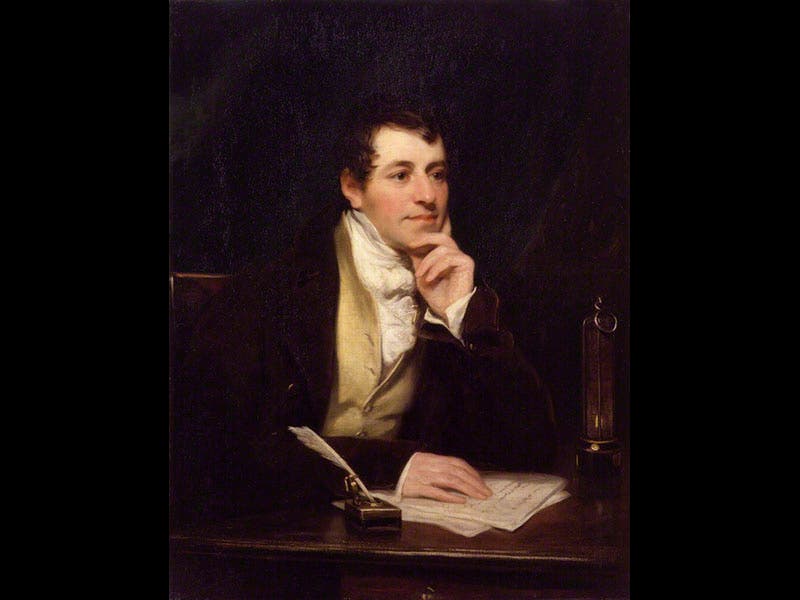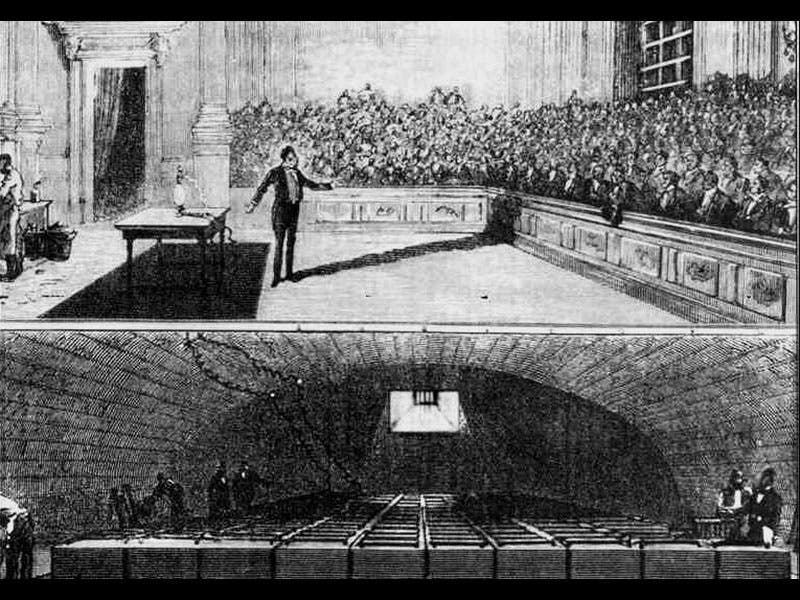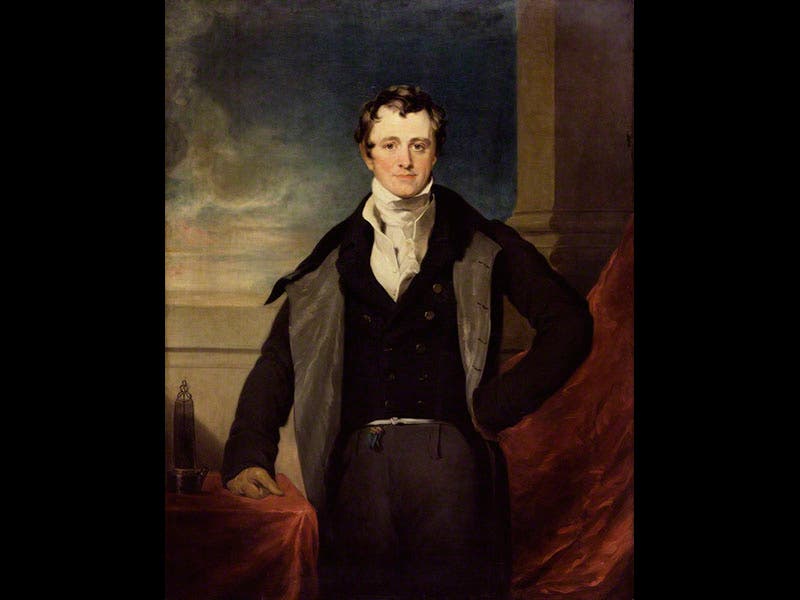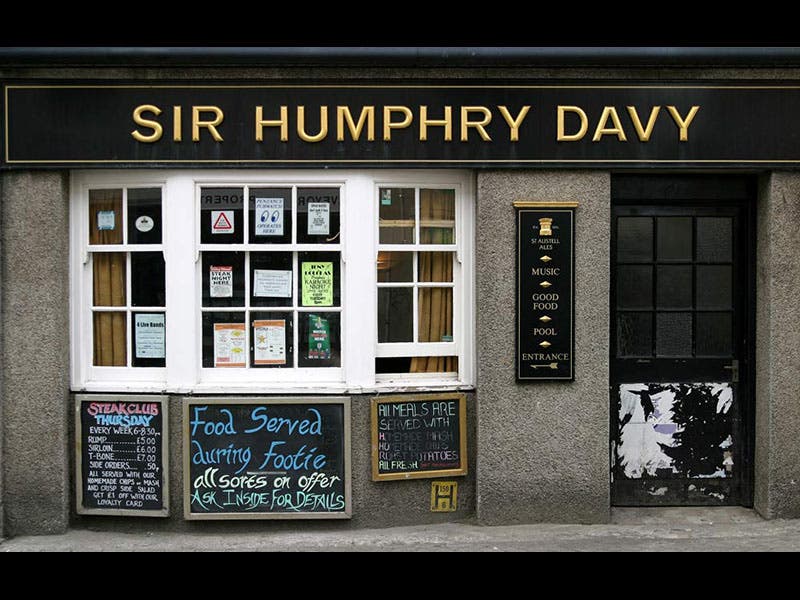Scientist of the Day - Humphry Davy
Humphry Davy, an English chemist, was born Dec. 17, 1778. Davy came from Penzance in Cornwall, and at a young age he became Director of the new Royal Institution of London, set up to educate the working classes of that city. He was a brilliant lecturer, regularly enthralling audiences of 500 or more with the astonishing power of Leyden jars or explosive mixtures of hydrogen and oxygen. We see above a fish-eye view of the lecture hall, with Davy at the podium at the top, standing above a cellar filled with batteries to power the demonstrations (second image above).
But Davy was more than a brilliant lecturer--he also was an innovative and original chemist, especially in his application of electricity to chemistry. The battery had been invented by Alessandro Volta in 1800 and announced in the pages of the Philosophical Transactions of the Royal Society that same year. Davy learned how to use an electrical process called electrolysis to isolate elements and compounds that had resisted more traditional chemical assaults. Davy found that if you placed two electrodes in a solution of a compound and connected the electrodes to the poles of a battery, the compound would break down and come apart, and the elements of which it was made would gravitate to one pole of the other. The first element he discovered in this fashion was potassium, in 1807, followed a week later by sodium, and within a year he had identified calcium, magnesium, barium, and boron. That is an amazing series of element discoveries by one man in one year.
There are two fine portraits of Davy at the National Portrait Gallery in London, by Thomas Phillips (first image) and Thomas Lawrence (third image), the latter a copy of an original in the Royal Society. There is a statue of Davy in Penzance, but it is not nearly as handsome as the portraits, although you can see it here. The nearby Humphry Davy pub is considerably more attractive (fourth image).
Dr. William B. Ashworth, Jr., Consultant for the History of Science, Linda Hall Library and Associate Professor, Department of History, University of Missouri-Kansas City. Comments or corrections are welcome; please direct to ashworthw@umkc.edu.

